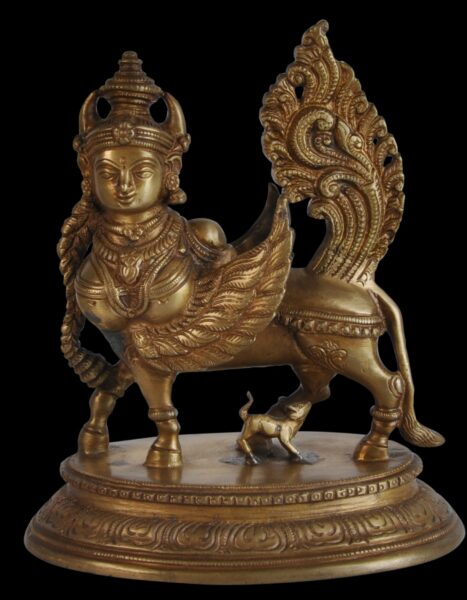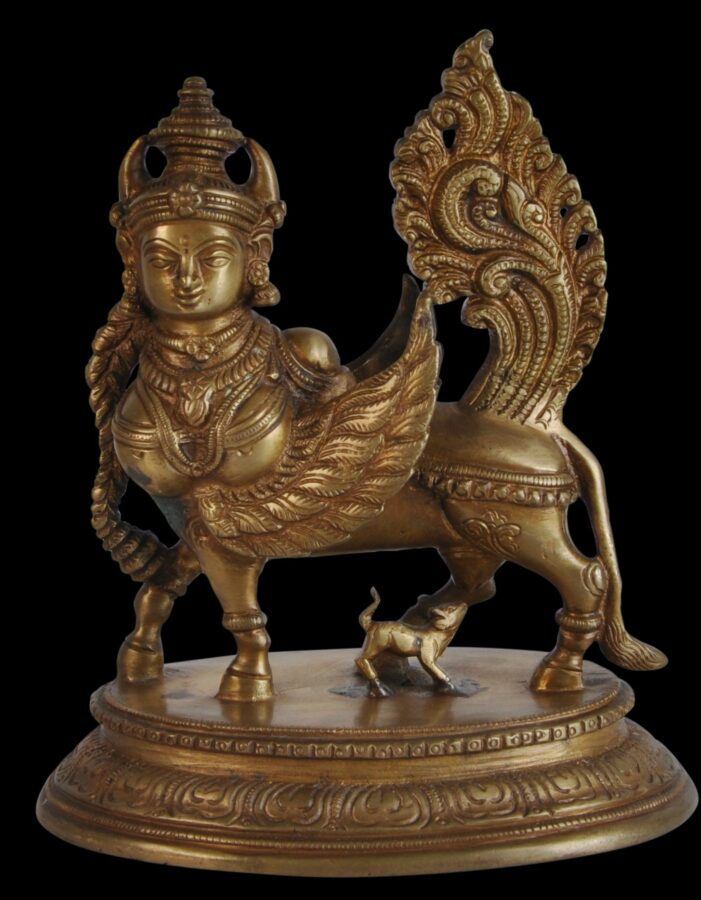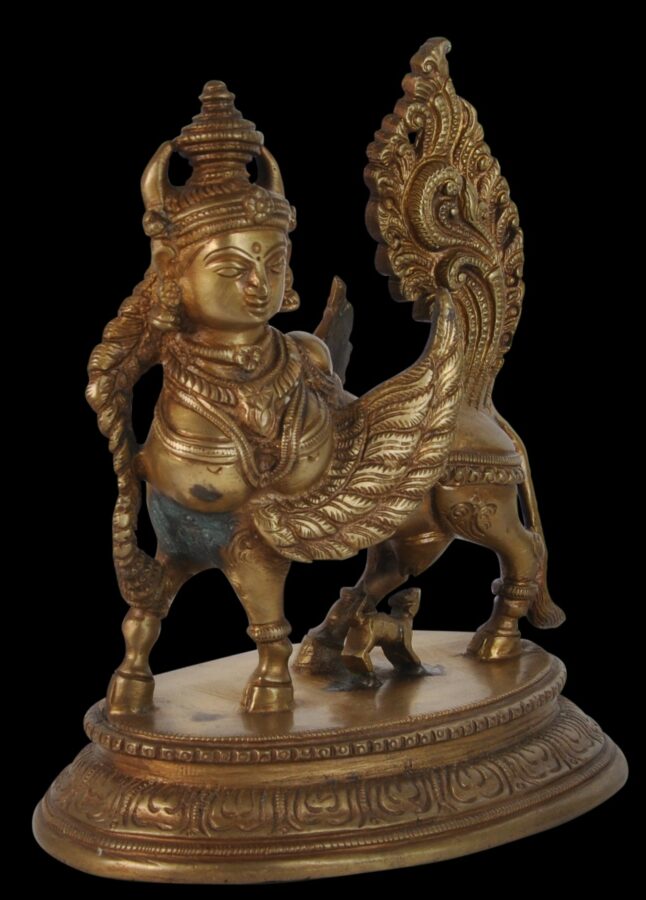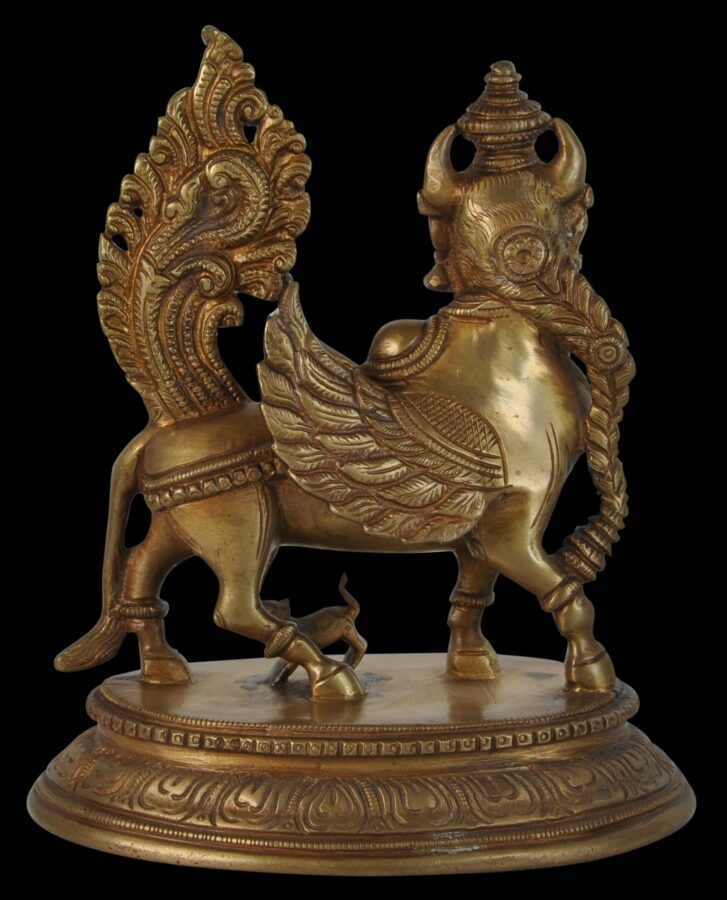The cast and chiselled image shows the wish-fulfilling deity Kamadhenu suckling a small calf mounted on an oval base incised with lotus petals. Kamadhenu has a human face with a high headdress, a pair of horns, and a long hair plait that reaches down to one of the legs; human breasts as well as a cow’s teat; the body of an Indian hump-backed zebu cow; prominent wings; and an equally prominent tail based on that of a pea fowl or a peacock.
Kamadhenu, in Hinduism, is regarded as the mother of all cows. Accounts of the origins of Kamadhenu vary but one story is that the deity merged from the churning of the cosmic ocean. The deity is not revered as a goddess in her own right and there are no temples in which Kamadhenu is the presiding deity. Instead, Kamadhenu is a subsidiary deity but is closely associated with Brahmanism.
See a painting depiction of Kamadhenu in the Philadelphia Museum of Art.
The form of Kamadhenu seems to be blended with that of the buraq, a figure from Islam – a half-horse, half-human, winged figure – that is not mentioned in the Koran, but according to Islamic tradition, it is supposed to have carried the Prophet Muhammad, accompanied by the Angel Jibril (Gabriel), to the sacred mosque in Mecca and later to the (then) farthest mosque, today known as the Al-aqsa Mosque in Jerusalem. The Prophet is then said to have ascended to heaven from the Temple Mount in Jerusalem with the help of the buraq, passing through seven heavens, communing with several angels and prophets along the way, before meeting with God. Representations of the buraq sometimes are encountered in Persian art, most notably in Persian miniature paintings, and from there the tradition of the buraq found its way to Kashmir and Mughal India (and even to Islamic Southeast Asia).
The image here is in excellent condition.
References
Afable, P., et al, Philippines: an Archipelago of Exchange, ACTES SUD/ Musee du Quai Branly, 2013.





